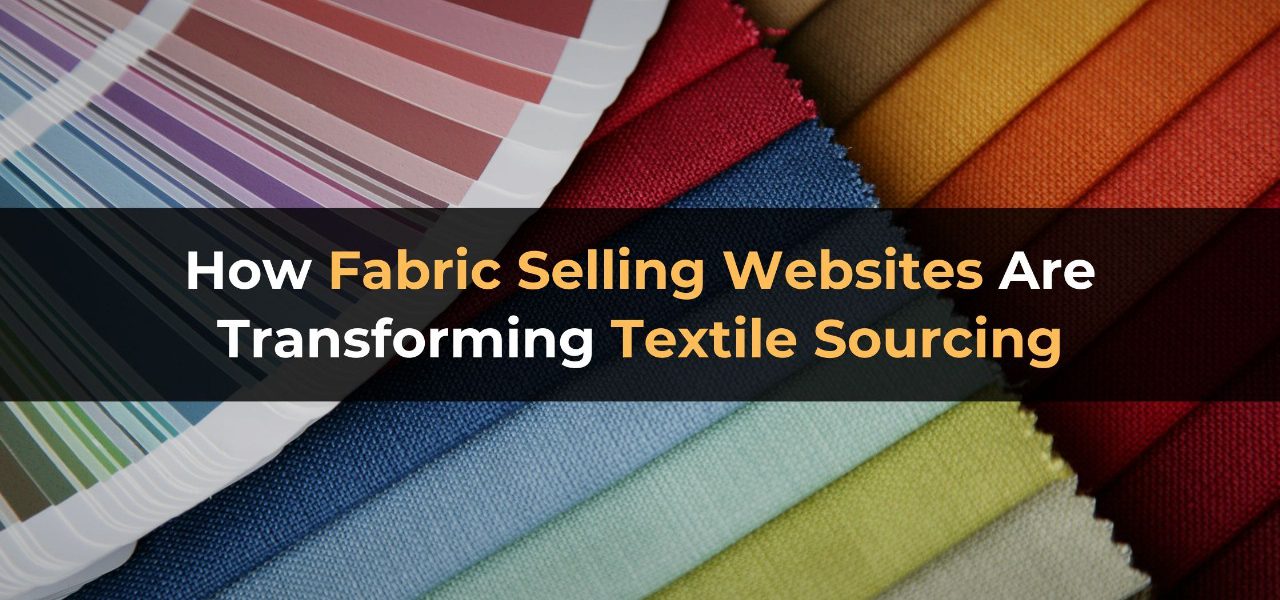Fabric sourcing has undergone a major transformation with the rise of fabric selling websites. The traditional method of sourcing textiles required buyers to visit physical markets, negotiate with suppliers, and manage logistics manually. Today, businesses can buy textiles online, connecting directly with fabric supplier India networks with just a few clicks.
As digital textile marketplaces grow, they provide increased accessibility, variety, and cost efficiency for businesses worldwide. This article explores how fabric selling websites are reshaping textile sourcing and what buyers need to know when purchasing fabrics online.
Why Fabric Selling Websites Are Gaining Popularity
1. Convenience for Buyers and Suppliers
- Buyers can source textiles anytime, eliminating the need for physical store visits.
- Suppliers gain access to a global market without needing expensive storefronts.
2. Wide Range of Fabric Options
- Online platforms offer a diverse selection of textiles, from cotton and silk to technical and non-woven fabrics.
- Buyers can browse multiple fabric options, compare prices, and select based on quality and reviews.
3. Cost-Effective Solutions
- Eliminating middlemen helps buyers reduce costs.
- Fabric suppliers can offer bulk discounts and wholesale pricing through digital platforms.
4. Secure Transactions and Reliable Logistics
- Reputable online marketplaces ensure secure payment options.
- Advanced tracking systems allow buyers to monitor their fabric shipments in real-time.
5. Sustainability and Ethical Sourcing
- Many online fabric platforms now prioritize eco-friendly textiles.
- Buyers can find organic, recycled, and ethically sourced fabrics with verified certifications.
How Fabric Selling Websites Are Reshaping Textile Sourcing
1. Direct Access to Fabric Supplier India Networks
- Businesses can now connect with Indian fabric suppliers without intermediaries.
- Indian textile manufacturers are expanding their reach through digital platforms.
- Buyers worldwide can source high-quality Indian fabrics quickly and affordably.
2. AI-Powered Fabric Selection
- Artificial Intelligence (AI) helps buyers find fabrics based on color, pattern, and texture preferences.
- AI recommendations improve efficiency, helping businesses make faster and more informed decisions.
3. Virtual Fabric Showrooms
- Some websites now use Virtual Reality (VR) technology, allowing buyers to inspect fabrics online.
- This eliminates the need to travel for physical fabric inspections.
4. Customized Fabric Orders
- Buyers can place special requests for unique patterns, colors, and designs.
- Many fabric suppliers offer small-batch production, catering to boutique brands and designers.
5. Increased Transparency in the Supply Chain
- Blockchain technology ensures fabric authenticity and ethical sourcing.
- Buyers can trace where and how fabrics are produced before making a purchase.
Benefits of Buying Textiles Online
1. Time-Saving and Hassle-Free
- Buyers no longer need to visit physical stores, saving hours of sourcing time.
2. Competitive Pricing
- Online platforms allow price comparisons, helping buyers find the best deals.
3. Secure Payment Systems
- Reliable payment gateways reduce the risk of fraud.
4. Detailed Product Descriptions and Reviews
- Buyers can access detailed specifications, certifications, and customer feedback before purchasing.
5. Bulk and Wholesale Ordering
- Businesses can buy textiles in bulk at wholesale prices directly from manufacturers.
Challenges in Online Fabric Sourcing
1. Lack of Physical Fabric Inspection
- Solution: Always request samples before placing large orders.
2. Shipping and Delivery Delays
- Solution: Choose suppliers with strong logistics networks and real-time tracking.
3. Quality Control Issues
- Solution: Work with verified suppliers that offer quality guarantees.
4. Complicated Return Policies
- Solution: Always read the return and refund policies before making a purchase.
How to Choose the Right Fabric Supplier Online
1. Research and Compare Suppliers
- Read customer reviews and check supplier ratings.
- Compare pricing, certifications, and past buyer experiences.
2. Request Fabric Samples
- Always test the quality of the fabric before placing bulk orders.
3. Understand Payment and Shipping Terms
- Check the estimated delivery times and any additional costs.
4. Look for Sustainable and Ethical Suppliers
- If sustainability is important to your business, check for certifications like GOTS and OEKO-TEX.
5. Start with a Trial Order
- Place a small initial order to evaluate the supplier’s reliability.
The Future of Fabric Selling Websites
1. Increased Adoption of AI and Automation
- AI will continue to improve fabric recommendations and enhance the user experience.
2. Sustainability-Focused Online Platforms
- More suppliers will shift towards eco-friendly fabric production.
3. Blockchain Integration for Transparency
- Buyers will have better insight into where and how fabrics are made.
4. Virtual and Augmented Reality for Fabric Inspection
- Buyers will soon be able to “touch and feel” fabrics digitally through VR.
5. Expansion of Indian Textile Suppliers in Global Markets
- Fabric supplier India networks will play a bigger role in international trade.
Conclusion
The rise of fabric selling websites is revolutionizing the way businesses and designers buy textiles online. With access to trusted fabric supplier India networks, buyers can now source high-quality fabrics quickly, affordably, and securely.
From AI-driven fabric selection to virtual showrooms and blockchain-based supply chain transparency, digital textile marketplaces are paving the way for the future of sourcing.
Whether you’re a small business owner, a fashion designer, or a large-scale manufacturer, online fabric sourcing offers limitless possibilities.




